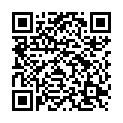|
|
|
| Module code: IBB-230 |
|
|
6VU (6 hours per week) |
|
5 |
| Semester: 2 |
| Mandatory course: yes |
Language of instruction:
English |
Assessment:
Written exam (90 minutes / can be repeated semesterly)
[updated 25.11.2019]
|
IBB-230 (P420-0232) International Business, Bachelor, ASPO 01.10.2020
, semester 2, mandatory course
|
90 class hours (= 67.5 clock hours) over a 15-week period.
The total student study time is 150 hours (equivalent to 5 ECTS credits).
There are therefore 82.5 hours available for class preparation and follow-up work and exam preparation.
|
Recommended prerequisites (modules):
IBB-140 Applied Business Mathematics
[updated 04.02.2020]
|
Recommended as prerequisite for:
IBB-340 Microeconomics
IBB-350 Macroeconomics
[updated 26.06.2025]
|
Module coordinator:
Prof. Dr. Teresa Melo |
Lecturer: Prof. Dr. Teresa Melo
[updated 25.11.2019]
|
Learning outcomes:
After successfully completing this module, students will be able:
- to explain basic concepts of descriptive statistics for univariate and bivariate data analysis,
- to select appropriate methods for statistical data analysis and apply them in the context of business applications,
- to create visual representations of data,
- to analyze, quantify and interpret relationships between two variables,
- to describe and model random phenomena using concepts of probability theory,
- to explain basic probability rules and apply them to exemplary business statistical problems,
- to calculate and interpret probabilities,
- to apply special discrete and continuous probability distributions to business applications (e. g. binomial and normal distributions),
- to interpret and communicate the results obtained from a statistical analysis.
[updated 04.02.2020]
|
Module content:
Descriptive Statistics:
- Data sources and data collection methods
- Types of variables and scales of measurement
- Tabulation of frequency distributions for grouped and non-grouped data
- Displaying categorical and quantitative data
- Description of univariate data sets using measures of location and dispersion
- Bivariate data analysis: graphical representation of data sets, cross tabulation, measures of association and correlation (contingency, correlation, rank correlation)
- Simple linear regression
Probability Theory:
- Definition of probability and basic concepts
- Fundamentals of set theory
- Empirical interpretation of probabilities (Laplace probability, statistical probability, subjective probability)
- Axioms of Kolmogorov
- Elementary calculation rules
- Conditional probabilities
- Stochastic independent events
- Total probability, Bayes’ rule
- Discrete and continuous random variables
- Special probability models (e.g. Bernoulli, binomial and normal distributions)
[updated 04.02.2020]
|
Teaching methods/Media:
Lectures supported by slides (projector) and blackboard (theory and example calculations). The lectures will be supplemented by exercises and tutorials. In order to support independent work, multiple exercise sheets covering the whole range of topics in this module will be provided. Solutions will be discussed with the students in the tutorials. Both the lecture notes and the exercise sheets will be available to students in electronic form.
[updated 04.02.2020]
|
Recommended or required reading:
Bowerman, O´Connell, Murphree: Business Statistics in Practice, 6th edition (international edition), McGraw-Hill/Irvin, 2011
OpenStax College: Introductory Business Statistics, OpenStax CNX, https://openstax.org/details/books/introductory-business-statistics, 2019
Sharpe, De Veaux, Velleman: Business Statistics, 3rd edition, Pearson, 2015
Sweeney, Williams, Anderson: Fundamentals of Business Statistics, 6th edition (international edition), Cengage Learning Emea, 2011
Weiers: Introductory Business Statistics, 7th edition (international edition), Cengage Learning Emea, 2011
[updated 15.12.2019]
|

